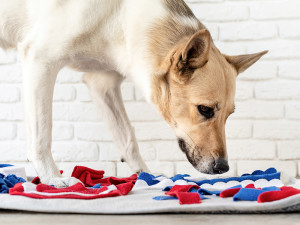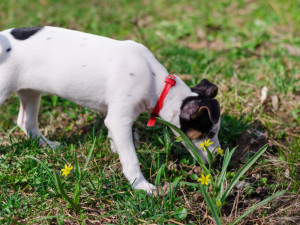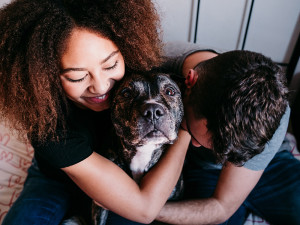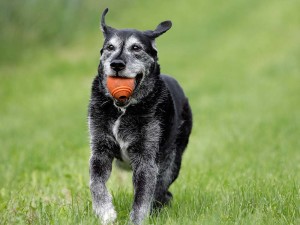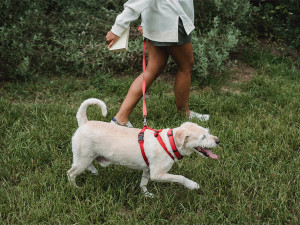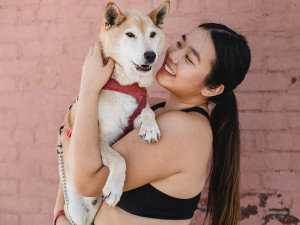Senior Dogs Need New Tricks to Stay Healthy In Body and Mind
Tuning in to your senior’s needs.
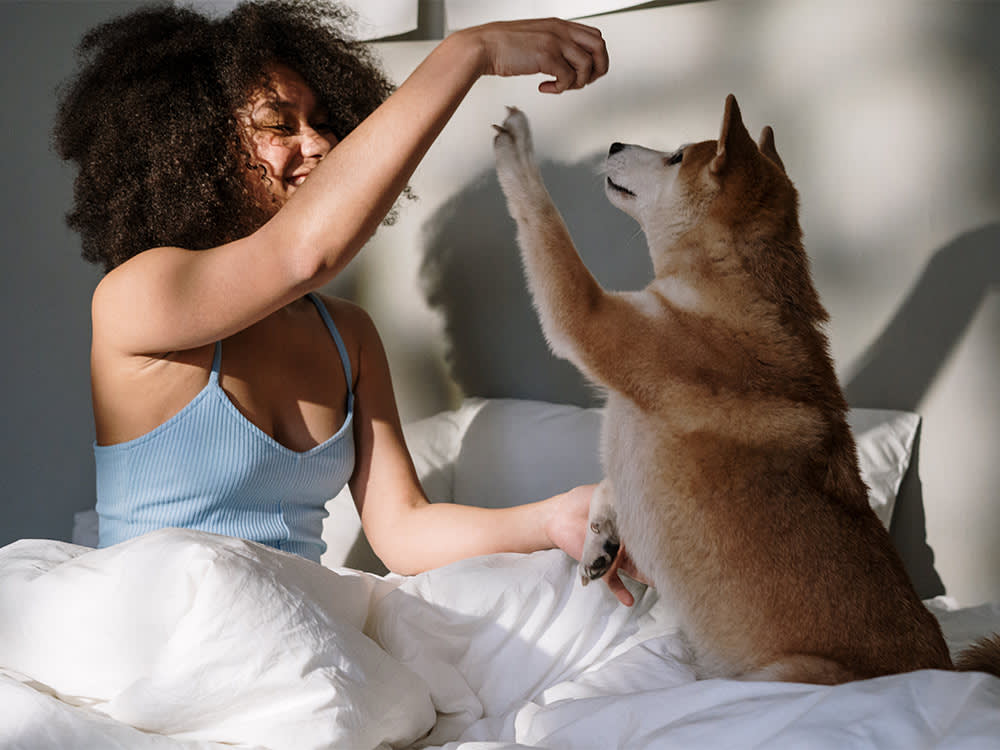
Share Article
Getting old is rough, but watching your dog get old is excruciating. All pet parents want is for their little friend to live forever. Is that too much to ask? While they can’t live forever, you can teach an old dog new tricks — which will keep them happy and healthy longer.
As dogs get older, they may become less agile, walk slower, and prefer sleeping in to early morning walks. They may also have trouble getting comfortable as they circle their dog beds. But this doesn’t necessarily mean that they have no interest in training. It simply means that they may require some adjustments and accommodations to their training routine. Here’s how to help an old dog stay young at heart.
Can you teach an old dog new tricks?
The old adage “You can’t teach an old dog new tricks” couldn’t be more wrong — dogs can learn new tricks at any age. Teaching an older dog new tricks is a great way to keep your pal mentally stimulated and strengthen your bond.
“A lot of old dogs get what I call the ‘shrinking world’ syndrome,” says certified veterinary behaviorist Dr. Lore Haug. “Their owners get in a rut with them; they start walking the dog less... and they don’t train the dog or teach him tricks. The dog doesn’t get as much stimulation and enrichment — maybe they stop taking the dog to the dog park — and there’s a significant decline in mental and physical challenges.”
How much do you spend on your pet per year?

What happens if you don’t keep an older dog stimulated?
As their senses of sight and smell grow less acute, a dog’s joints stiffen, or their legs may splay like Bambi’s on slick hardwood floors. Some develop a canine equivalent of Alzheimer’s.
“It’s called cognitive dysfunction syndrome,” Haug explains. “And it shows up with dementia, changes in their sleep-wake cycles — they might pace all night and sleep all day — vocalizing at night, forgetting their training. You say ‘Sit’ and they stare at you blankly.” Other dogs develop anxiety disorders for the first time, anything from separation anxiety to storm phobias or nocturnal panic attacks.
“The dog may be less social, not coming to greet you, or might get clingier with increased anxiety,” Haug says. “Sometimes they’re just disoriented; they go to the back door but poke their nose at the hinge side. Sometimes we see aggression and irritability. But because anxiety is one of the symptoms, the more you keep the dog stretched mentally, the more you are able to control some of those reactions.”
How to make an old dog happy
Start by accommodating your dog’s physical changes: Put down carpet runners, plug in a night-light, buy a memory-foam dog bed or steps up to your bed. Then look for ways to connect, whether that’s grooming or just hanging out on the porch or at the park.
Keep doing trick training.
By working within your dog’s new limits, you can lessen the change in their responses. Choose games they can still play readily, amusements that don’t stress them out, and they’ll be as eager as ever.
“Find new ways to connect with your dog,” Haug urges. “Teaching a trick is not only good for the dog’s brain, but it’s a fun, low-pressure way to do something that doesn’t require a lot of physical strength. The trick doesn’t need to be a backflip. They can bow, cover their eyes with their paws, flick their ears.”
Other training tricks that would be great for older dogs include:
Make exercise accommodations.
If your dog isn’t as interested in long walks, maybe they can swim. Or make the walks shorter. Or maybe you can just take them into a wooded park, lie down on a blanket and let them look around and sniff.
Choose softer and smellier toys.
Older dogs need softer toys. Look for toys that are gentle on older jaws, sensitive teeth, and weakened muscles and joints — senior Kongs are constructed with softer rubber.
Their olfactory sense has probably diminished, so stronger scents are good. And high-contrast colors are important so they can see the toy clearly. But the notion that they don’t want to play anymore? That’s not true at all! To be able to lie down and just chew helps them relax and keeps them from being bored. You can’t ever assume that your dog doesn’t want to play.
Pay attention to hearing and vision changes.
Sometimes, the startle or anxiety is just because the dog can’t see or hear as well as they once did. Cataracts can start to form as early as age seven, for example. You might not even realize they’re blind or deaf, especially if you have other dogs and they’re following their lead.
Susan McCullough, author of Senior Dogs For Dummies, says, “If you sense your dog’s hearing is going bad and they don’t already know hand signals, teach them now. If your dog is blind, now is not the time to change the furniture. Dogs are amazing, though, in their ability to compensate. I had a dog who still responded to vibrations, so I’d clap my hands and she’d come to me. Creativity goes a long way.”
Changing diet for older dogs.
Food for senior dogs isn’t as complicated as the marketers make it, according to Dr. Donna Raditic, a vet certified in alternative therapies. “Older dogs can eat the adult diets,” she says. “The development of geriatric diets is a bit of marketing, plus some old beliefs that lowering protein levels spares the kidneys. Actually, we now know that older dogs and humans need more protein. The main concern for geriatrics is to watch calories, because they tend to be less active, especially in winter.”
Give them worth.
“The most crushing thing is this sense — I’m sure it’s not intentional — but it’s almost like the worth of the dog isn’t the same anymore,” Haug says. “People will stop giving heartworm prevention or shots; they say, ‘Oh well, he’s old, we’re just going to feed him until he dies.’” She adds, “They deserve better than that.”
It’s a kindness to soften distractions such as sudden loud noises, and to avoid abrupt changes in routine. Older dogs can be more easily startled; as they’re less able to maneuver or defend themselves, they feel more fragile and grow more fearful, reluctant to play with new dogs or children, distressed by chaos and commotion. Dr. Debra Horowitz, a veterinary behaviorist, notes that dogs’ neurotransmitter functions change with age —oxygen levels go down and brain chemistry is altered.
Not everything an old dog is going through is related to age.
McCullough has one final reminder: Don’t write everything off to aging. A single imperious diva bark to summon you might not be a sign of reduced mobility or altered brain chemistry; it might just be a single imperious diva bark because it’s fun to summon you. Refusal to eat or mobility issues could be signs of other problems, not age-related at all.
There’s one thing age can’t affect, she emphasizes, and that’s the bond you’ve already forged with your dog. “With a puppy, you’re still building that bond,” McCullough points out. “With an older dog, the history’s been created; all you have to do is celebrate it. Revel in it. And when you’re uncertain what to do, let love be your guide.”
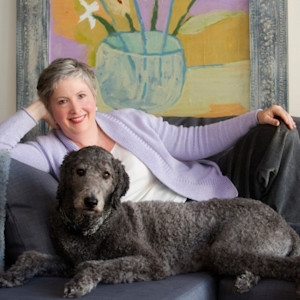
Jeannette Cooperman
Jeannette Cooperman has written several nonfiction books and a murder mystery, A Circumstance of Blood (Endeavour Press, 2015)—and yes, there’s a dog in it. She was a staff writer at St. Louis Magazine. She goes home to a century-old farmhouse in Waterloo, Ill., where she and her husband live with a standard poodle named Louie.
Related articles
![Older dog playing with ball in a green field]()
Dog Arthritis Treatment: How to Relieve Arthritis Pain in Dogs
Tips for treating achy joints — from medications to massages.
![A woman with a book in her hand walking her dog on a leash in a grassy park.]()
Why You Should Take Your Pup on a “Scent Walk”—All the Dogs Are Doing It
Why you should let your dog get all their sniffs out on a stroll.
![Woman with long straight black hair and a gold nose ring holding a senior Shiba Inu mixed breed dog wearing a red harness]()
Senior Wellness Checks for Dogs
Tips to help your oldster live long and prosper.
![A dog laying on a blue couch and resting its chin on a pillow.]()
Help! My Senior Dog Is Bored!
Physical exercise isn’t the only way to stimulate your dog—engaging their mind works, too.
